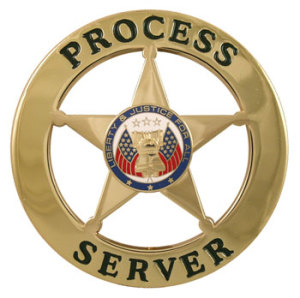
The ring on the doorbell was a process server.
Bingo! You’ve been sued.
Now what?
Breathe deeply and work your way through this five step check list. Then I’ll suggest some options.
The details in this post are based on California law. The basic principles of notice, answer, and trial apply everywhere.
Scout the territory
1. Look at the caption: It identifies the parties to the suit. It’s right below the centered name of the court involved. The Plaintiff is the person filing the suit: they have a comPLAINT for which they want the court’s help.
Do you recognize the plaintiff as one of your creditors? If you don’t recognize the plaintiff, does the complaint explain how the plaintiff comes to assert someone else’s claim against you?
2. Find any verification: Attached to the end of the complaint may be a verification. This is a sworn statement by someone with personal knowledge of the facts that the facts set out in the complaint are true. If there is no verification, in California you can file a simple form called a general denial if you want to contest the suit.
3. Mark your calendar: In California, you have 30 days from service of the complaint to file an answer. If you don’t file an answer, you are sure to lose the suit.
4. Check whether suit is timely: The statute of limitations in California is four years. The four-year clock begins tickling when there was last activity on the account, a purchase or a payment. If it’s been more than four years since you either paid or charged on a credit card, you can win the suit simply, if you file an answer.
5. Read the prayer: The prayer is at the end of the complaint, though maybe not the last page. Determine how much money is at stake, and whether there is any claim that you have committed fraud. The consequences of letting a fraud complaint go to judgment are much more serious than just a suit for money.
Plan of attack
Once you’ve taken those five steps to figure out who is suing you and what it takes to oppose the suit, you need to decide what to do.
Do nothing
If you do nothing, chances are real good that the plaintiff will ask the judge to enter your default, stating that you haven’t answered.
When you don’t answer a properly served complaint, the court system assumes you agree that you owe the money. Sooner or later, the court will enter a judgment against you.
A judgment entitles the creditor to use the power of the government to get its money. In the Golden State, it means the creditor can levy bank accounts, file a judgment lien, and garnish wages.
A judgment is enforceable for 10 years.
File an answer
If you contest the suit by answering, you at least slow the creditor’s march to getting a judgment. If you have a good defense, you may actually win.
The California court system provides information and resources for those representing themselves without a lawyer. But as the Alameda County court’s site says: You cannot come to Court and tell the judge that you are not a lawyer and do not understand what you are supposed to do.
If you are going to be your own lawyer, you are charged with knowing what a lawyer knows.
Filing an answer at least gives you a position from which you can negotiate a settlement. Consider whether you have any resources with which to fund a settlement. How is it possible to pay the debt now when you couldn’t pay before?
Find global debt solution
Whether or not you have a defense to this suit, the filing of a lawsuit should be a red flag for you.
- Is this suit the tip of the iceberg?
- Is this creditor just one of many who are poised to sue you?
- Will a piecemeal approach to your debts really get you anywhere?
It may be time to see a financial counselor or a bankruptcy attorney. Even if you don’t expect to file a bankruptcy case, a bankruptcy lawyer deals with debt issues all the time and can help you assess your options.
Look at your calendar: you have 30 days in which to plot your course before you are at risk of having a judgment entered.
Make a plan, now, before the 30th day.
More
California protections from debt buyers
Wage garnishments in California
Are California judgments dischargeable in bankruptcy
Image courtesy of nles.com.





